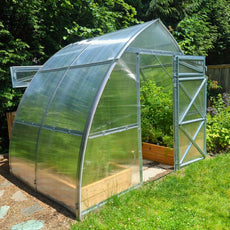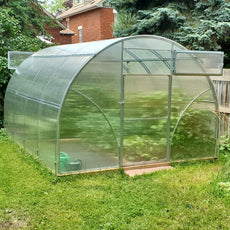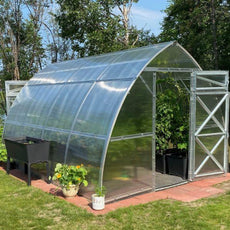In this article, you will learn:
- Characteristics of Portugal’s Growing Regions
- Challenges of Gardening in Portugal
- The Benefits of Using a Greenhouse in Portugal
Portugal generally experiences a Mediterranean climate in the south and a cooler Atlantic climate in the north. Winter temperatures in Lisbon, for example, typically range from 8°C to 15°C, while summer temperatures average between 20°C and 32°C. Extreme weather events can occasionally push temperatures outside these ranges. Understanding these climate patterns is crucial for successful gardening and crop management in Portugal.
 Image from Planta Maps
Image from Planta Maps
Characteristics of Portugal’s Growing Regions
- Mediterranean climate with Atlantic influences
- Winter temperatures usually range from 5°C to 15°C
- Hot summers with average temperatures between 25°C and 35°C
- Rainfall varies, with wetter north and drier south
- Long growing season, with year-round cultivation in some areas
- Strong coastal winds, especially in exposed regions
The primary growing season in Portugal typically spans from March to October. However, in the southern regions, especially the Algarve, the growing season can extend due to milder temperatures. The exact length and timing of the growing season may fluctuate based on the particular region within Portugal and year-to-year climatic variations.
Challenges of Growing in Portugal
Hot, Dry Summers
Southern Portugal experiences prolonged dry periods, with summer temperatures often exceeding 35°C. This heat can stress plants, requiring drought-resistant varieties and efficient irrigation systems to maintain healthy growth. Mulching and shading techniques are essential to retain soil moisture and protect crops.
Unpredictable Rainfall and Soil Erosion
While the north receives regular rainfall, the central and southern regions can face prolonged droughts followed by sudden heavy rains. This irregularity can lead to soil erosion and nutrient depletion, making soil conservation techniques like terracing and cover cropping crucial for sustainable gardening.
Coastal Winds and Temperature Fluctuations
Strong Atlantic winds can damage plants, dry the soil, and create harsher growing conditions, especially along the coast. Inland areas may experience sudden temperature drops at night, affecting sensitive crops. Windbreaks, row covers, and proper site selection help mitigate these challenges.

The Benefits of Using a Greenhouse in Portugal
Using a greenhouse in Portugal is an excellent way for gardeners to manage the country’s diverse and sometimes unpredictable climate. By creating a controlled environment, greenhouses help extend the growing season, allowing for earlier planting and later harvests. They also protect crops from extreme heat, unexpected cold snaps, and strong coastal winds, which can otherwise hinder plant growth.
Extend Your Growing Season
- Without a greenhouse: The outdoor growing season in Portugal typically spans from March through October. This period can limit cultivating heat-loving vegetables that thrive in warmer climates.
- With a greenhouse: Greenhouses in Portugal can dramatically extend the growing season, often enabling cultivation from late February through November or even year-round for specific crops. This controlled setting protects plants from unexpected late frosts and provides a stable growing environment despite Portugal's frequently changing weather patterns.

Grow a Wider Variety of Vegetables
-
Without a greenhouse: Portuguese gardeners typically focus on crops suited to their regional climates.
|
Potatoes Cabbage Onions Carrots Lettuce |
Kale Fava beans Chickpeas Grapes Olives |
- With a Greenhouse:
Greenhouses in Portugal can dramatically extend the growing season, often enabling cultivation from late February through November or even year-round for specific crops.
|
Tomatoes Cucumbers Sweet peppers Aubergines (eggplants) Melons Butternut squash Zucchini (courgettes) Strawberries Chili peppers |
Table grapes Figs Apricots Nectarines Lemons Oranges Limes Passion fruit |
Basil Coriander (cilantro) Lemongrass Microgreens Spinach Runner beans Snap peas |





